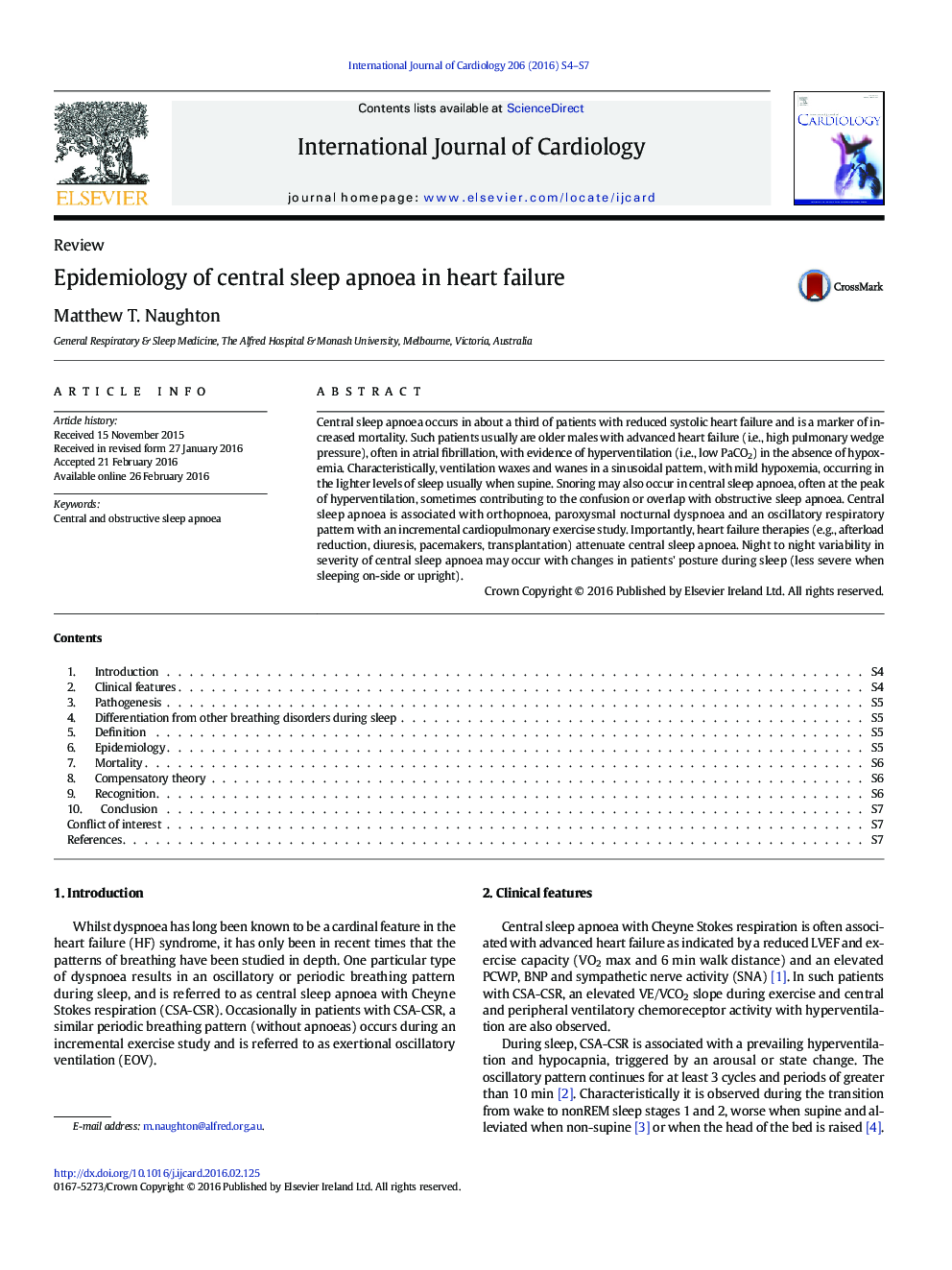| Article ID | Journal | Published Year | Pages | File Type |
|---|---|---|---|---|
| 2928801 | International Journal of Cardiology | 2016 | 4 Pages |
•Central and obstructive sleep apnoea occur commonly in heart failure.•Orthopnoea and paroxysmal nocturnal dyspnoea are markers of sleep apnoea.•If apnoea is identified, additional therapies (such as continuous positive airway pressure) should be considered.
Central sleep apnoea occurs in about a third of patients with reduced systolic heart failure and is a marker of increased mortality. Such patients usually are older males with advanced heart failure (i.e., high pulmonary wedge pressure), often in atrial fibrillation, with evidence of hyperventilation (i.e., low PaCO2) in the absence of hypoxemia. Characteristically, ventilation waxes and wanes in a sinusoidal pattern, with mild hypoxemia, occurring in the lighter levels of sleep usually when supine. Snoring may also occur in central sleep apnoea, often at the peak of hyperventilation, sometimes contributing to the confusion or overlap with obstructive sleep apnoea. Central sleep apnoea is associated with orthopnoea, paroxysmal nocturnal dyspnoea and an oscillatory respiratory pattern with an incremental cardiopulmonary exercise study. Importantly, heart failure therapies (e.g., afterload reduction, diuresis, pacemakers, transplantation) attenuate central sleep apnoea. Night to night variability in severity of central sleep apnoea may occur with changes in patients' posture during sleep (less severe when sleeping on-side or upright).
